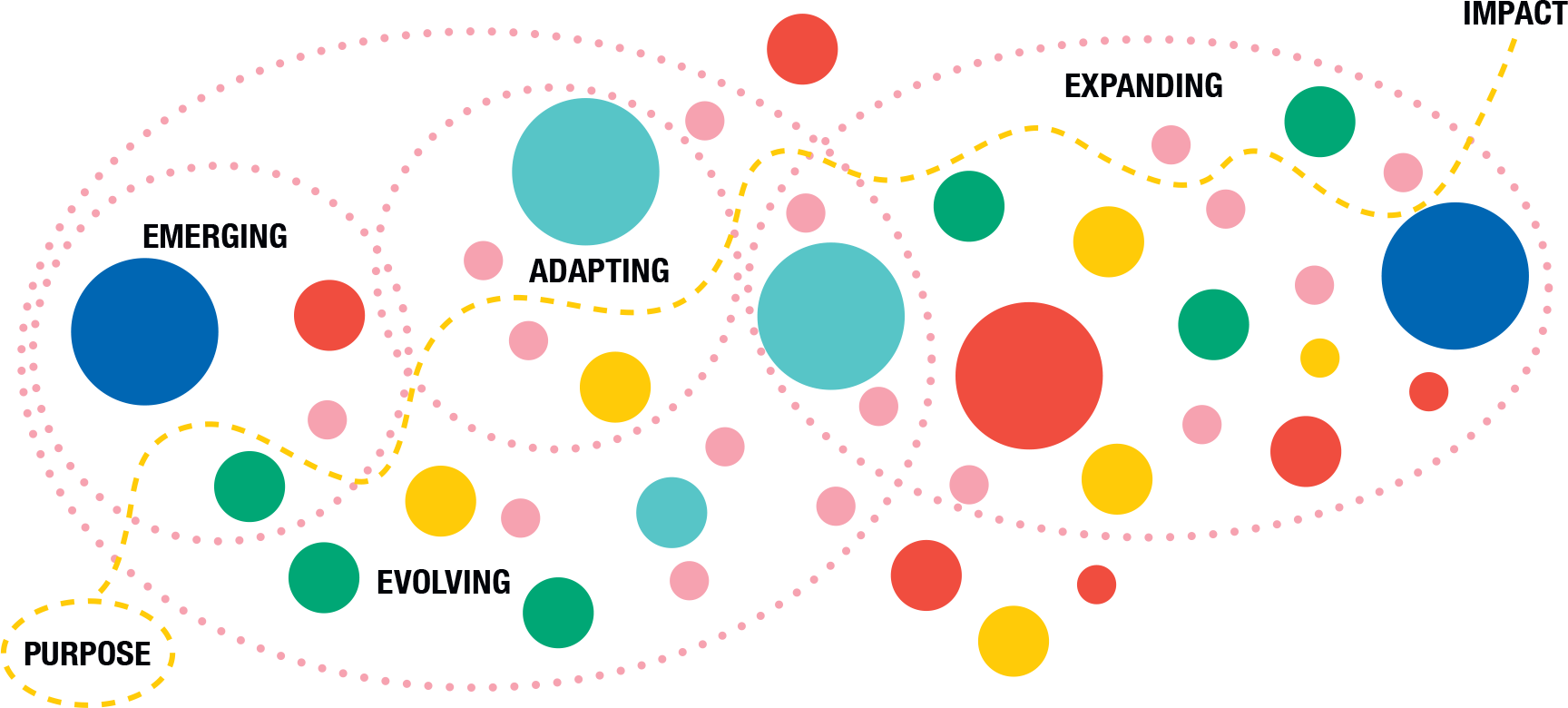Dear readers, the Ecosystem Handbook is finally in Your hands. And looking into the situation in our business environment, we certainly hope that you will find something new in it. Because the topic, the art of creating impact, seems more important than ever.
On one hand the discussions around ecosystems are raleted to the EU Recovery Funding. In addition, number of large companies Nokia, Metsä and Fortum, Neste, Uros and Kone to name a few, are actively communicating about their ecosystem initiatives.
To participate in the discussion, here come a few learnings “fresh from the oven”: The framework for thinking ecosystems as a journey.
Framework for thinking: Ecosystem Journey
When discussing ecosystems, it is important to understand where thet are in their journey. Looking into a few Finnish examples like smart city ecosystem LUXTURRIM5G, marine industry’s One Sea and healthcare ecosystem Clever Health Network – they are are well established. Others lik Nokia’s Industrial 5G and Metsä’s and Fortum’s ExpandFibre Veturi Ecosystems and construction industry’s Keko Ecosystem are in the early phase. They all face different leadership challenges depending on the ecosystem phase.
The Ecosystem Handbook is built around a few key concepts. One of the most important is viewing ecosystems as a journey, which serves as basis for understanding the challenges that different organizations and people face along the way. The ecosystem journey framework has three key elements: Purpose, phases and impact.
- Purpose is the foundation of all ecosystems. It defines why the ecosystem exists and is the basis for setting objectives. Purpose is rational and above all emotional – and as best a powerful tool for aligning organizations behind a common goal and engaging people to do their best.
- Phases – emerging, evolving, adapting and expanding: Each phase has specific leadership challenges. Describing them as a journey can help understand and position different ecosystems, and reflect and guide actions and decision making based on the positioning.
- Impact is created in all phases. That’s why we suggest revisiting purpose and objectives periodically.

The ecosystem journey starts from defining the purpose, the initial idea around which the ecosystem is formed. It progresses along emerging, evolving, adapting and expanding phases. New partner organizations and people come onboard and others may leave, creating impact along the way.
The essence of the Ecosystem Handbook is described as “Ecosystem management cycle” – a learning cycle designed to ensure that the ecosystem stays true to the purpose, articulates objectives in transparent way and builds on strengths of partner organizations and people.
If you want to know more about ecosystem leadership, please order and read the book 😀. And if you need support with defining your ecosystem purpose and objectives, or want to learn more about orchestration and ecosystem leadership, please get in touch with us!




